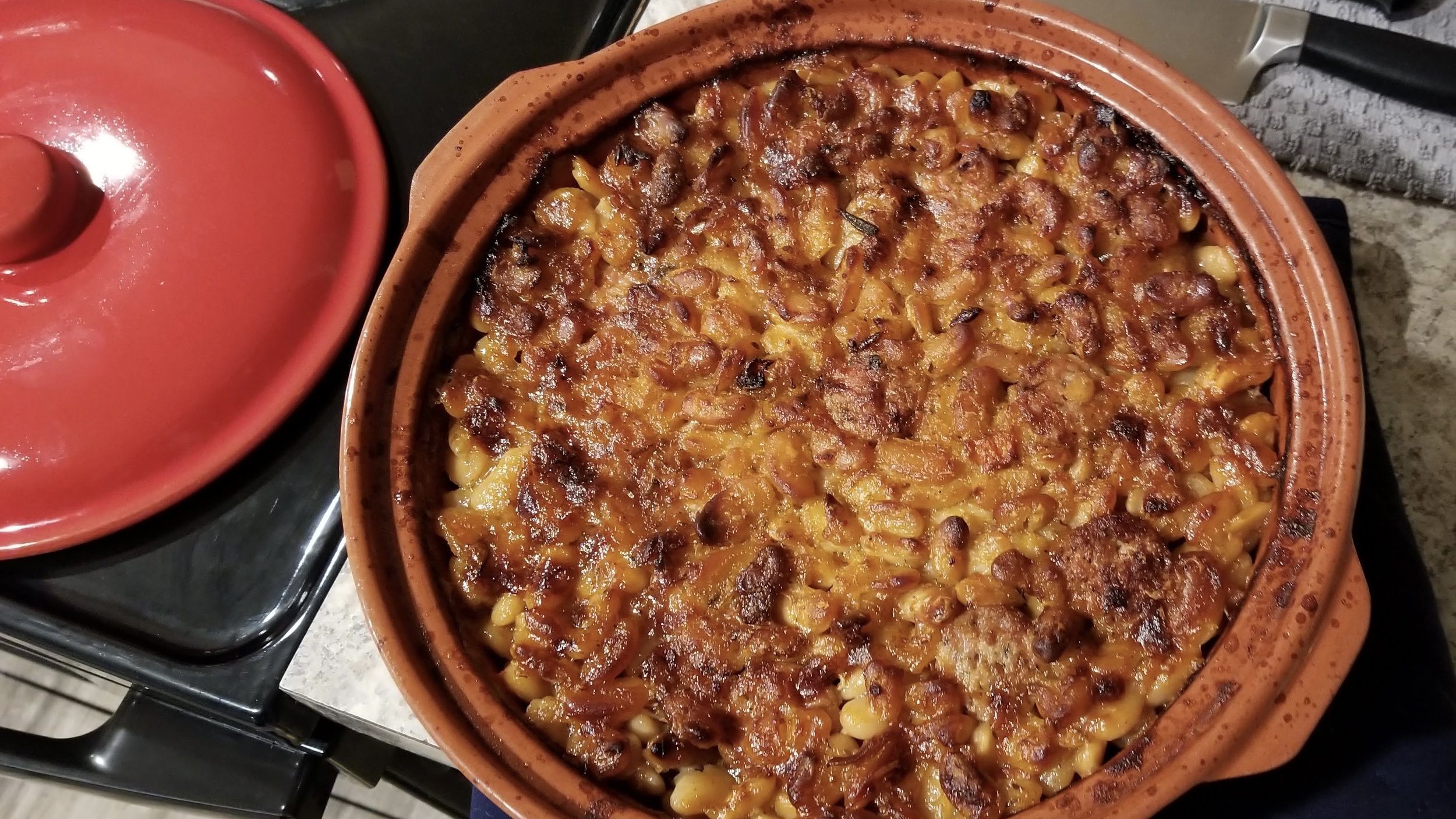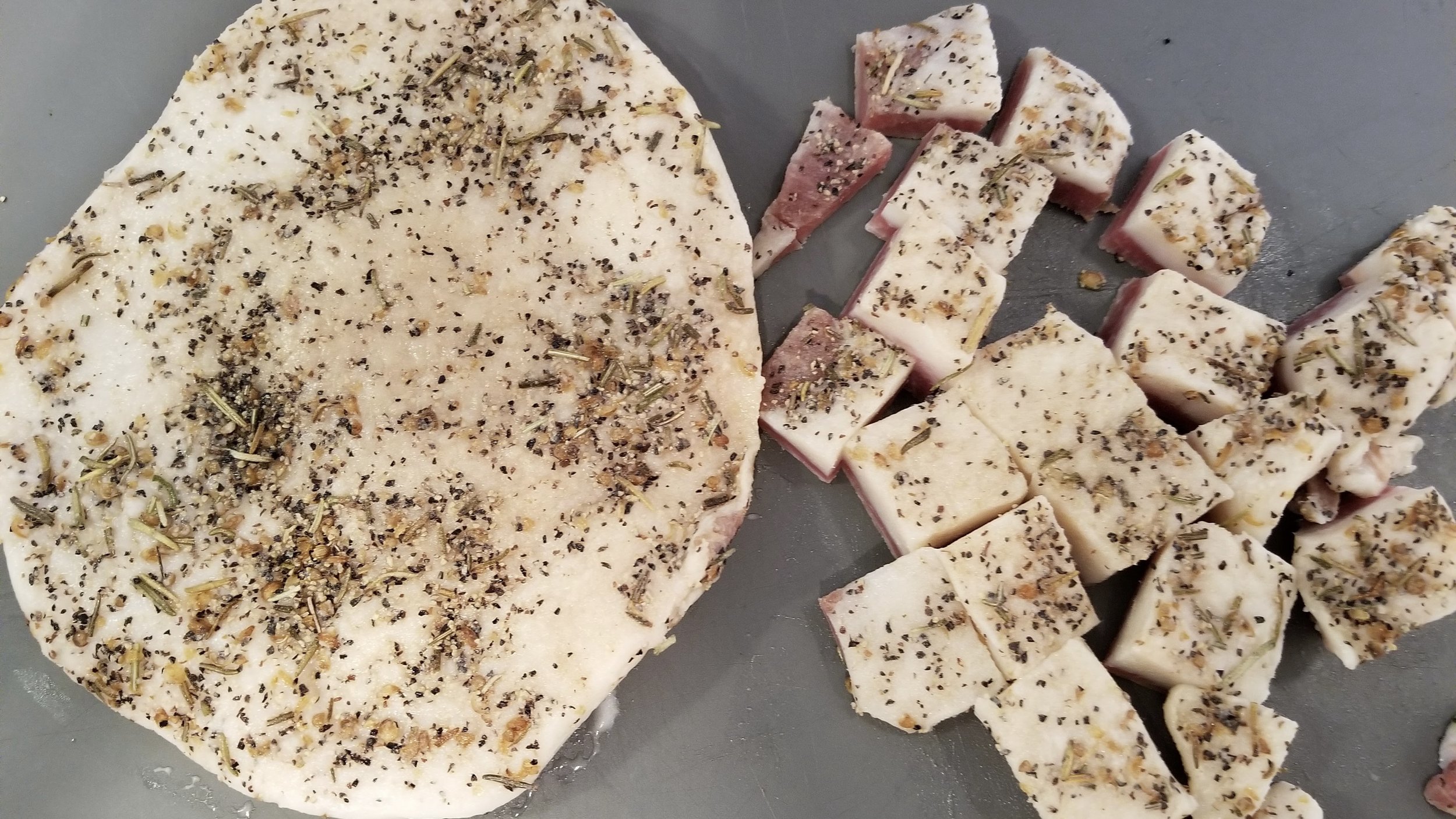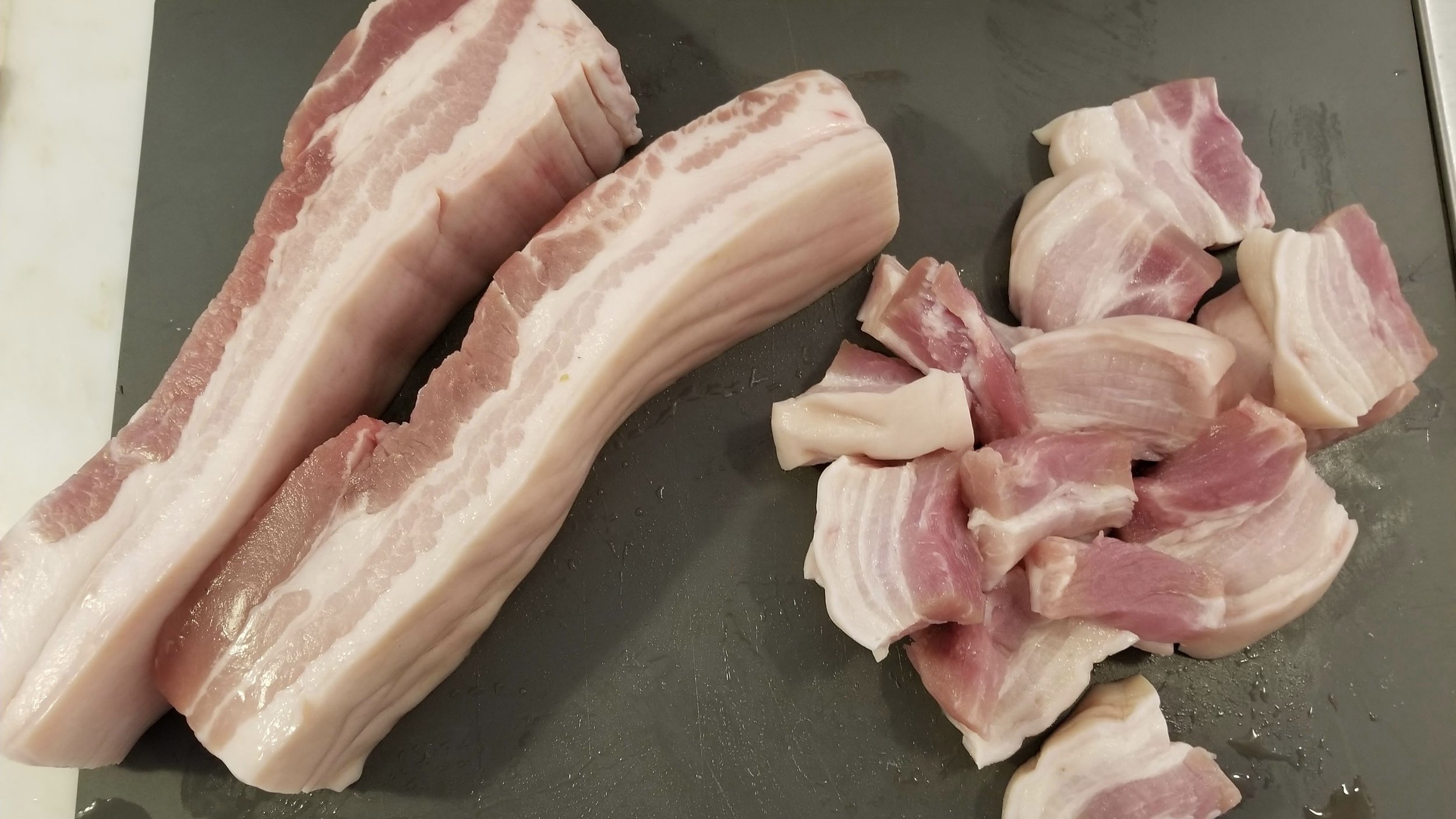BSJ’S CASSOULET
A homemade cassoulet is a dish that, if you’re successful in making it, will wow anyone eating it as few dishes could.
This is a very long recipe (it can take three days to make); it is complicated, though the ingredients are commonplace; and it necessitates using only the best.
That said, it is a dish that, if you’re successful in making it, will wow anyone eating it as few dishes could.
And you will eat history: cassoulet hearkens back centuries in southern France, where it is said it still is made best of all, to a time when there were only simple things; but layered one upon the other, they contrived the most heady of aromas and flavors.
All the steps in the recipe are simply assembled into two major steps: you prepare the beans; you make a meat ragout. Then you combine them as the cassoulet.
RECIPE: BSJ’s Cassoulet
Serve 6-8
Ingredients
For the beans:
2 pounds dried flageolet or Rancho Gordo Tarbais beans (Great Northerns in a pinch)
1 large unsmoked pork hock* [French: jarret]
1 12”x6” piece of pork skin, rolled and tied* [French: couenne]
1 large carrot, in thirds
2 stalks celery, each halved
1 large onion, peeled and halved at the poles
3-4 sprigs thyme, whole
1 large or 2 small bay leaves
10 peppercorns
6 cloves garlic, peeled, whole
(continued below the photos here)
Guanciale (top photo), also known as cured pork jowl or, in French, as “jute,” is more readily available these days outside of specialty or Italian butcher shops. Uncured pork belly (lower photo, what we call, in its cured state, “bacon”) is easily got at many Asian groceries. The French term for it is “ventrèche” and it is indispensable to the cassoulet.
For the ragout and final cassoulet:
10 tablespoons duck fat* or extra-virgin olive oil
1/2 pound guanciale or pancetta, dusted of salt and seasonings, in 1-inch squares [French: jute]
1 pound pork shoulder, trimmed, cut into 1-inch cubes
1 pound pork belly*, cut into 1-inch cubes [French: ventrèche]
2 medium onions, peeled and chopped
2 medium carrots, chopped
6 cloves garlic, peeled and smashed
1 cup white wine or tart apple juice
4 sprigs each flat-leaf parsley and thyme, 2 bay leaves, and 2 small celery ribs with leaves, all tied into a bundle with kitchen twine
1/2 of a 15-ounce can of whole peeled tomatoes and any juice
1 box chicken broth (or, better, leftover bean broth from previous cookings or cassoulets)
The softened vegetables from the bean preparation
2 confit duck legs, stripped of meat
1 pound “French” pork sausages
(or other mild, garlic- and herb-flavored sausage; rabbit or pheasant sausage, for example)
Directions
Prepare the beans: Soak beans overnight or for at least 6 hours in enough water to cover by 2 inches. When ready to cook, rinse and add to a very large pot along with the fresh hock, rolled-up pork skin, and the other bean cooking ingredients (carrot, celery, etc.). Cook the beans slowly until they are tender but not mushy, anywhere from a little over an hour to 2 hours, or more, depending on the age and size of the dried beans. Set the pot aside, overnight if possible, and skim any fat that’s risen to the top.
When cool, remove the hock from the pot. Pull off the skin, reserving it, and tear off any meat, reserving it as well, careful to trim and toss any sinew or cartilage and, of course, any bones. Chop or tear the meat into bite-sized pieces. Remove the rolled-up skin from the beans and keep it aside as well.
Either store the beans with their liquid for a day or two, or, when ready to assemble the cassoulet, drain the beans, reserving them, and separating out as much of the vegetable and seasoning matter as possible. Anything soft and non-fibrous (for instance, the carrots but not the thyme twigs or peppercorns), save to add to the preparation of the meat ragout in the next step. Important: save the bean cooking liquid for use in the next cassoulet’s bean cooking or for another purpose (such as a stew or soup); it is very flavorful.
Make the ragout: Add 3-4 tablespoons of duck fat or olive oil to a very large, heavy-bottomed pot. Add the guanciale or pancetta, fat side down, and render the fat, crisping but not burning the guanciale pieces. Remove them with a slotted spoon and set aside along with the hock meat from the bean preparation.
In batches, in order to brown well, add the cubes of pork shoulder and belly; as each batch browns on all sides, remove it to the bowl of reserved meats. A good 1/8-inch of fat should remain in the pot; if not, add more duck fat or olive oil. Brown the raw vegetables, stirring, adding the garlic toward the end of the browning in order not to burn it.
Deglaze the pot with the wine or juice, scraping up any brown bits. Add the reserved meats, the herb bundle, tomatoes, and chicken broth (or reserved bean broth). Add the soft-cooked vegetables reserved from the bean preparation. The liquid should come up just to the top of the solids; if not, add a bit more broth, wine, water, or juice. Bring the pot to a boil, reduce the heat to a simmer, and cook the ragout, cover askew, stirring occasionally, for 90 minutes, or until the liquid has thickened and the meats are cooked through. Depending on your selection and its size, cooking the ragout could take up to 3 hours.
Let the ragout settle and remove as much risen fat as possible. (It’s really best to prepare the ragout up to 2 days ahead and refrigerate; not only does this develop its flavors, but the fat rises and gels, making for convenient removal.) When the ragout is cool enough to handle, separate the pieces of meat from the vegetables and discard the herb bundle. Mash everything but the meats into a paste and moisten the meats well with some of it; the meats should now resemble a stew.
Assemble the cassoulet: In a skillet, melt 2 tablespoons duck fat or olive oil and crisp the confits of duck legs and, when cool enough to handle, shred them of their meat, discarding the sinew and bones, and mixing the meat into the ragout. In the same skillet, brown the sausages, cutting them in half or into pieces when finished; keep aside.
Heat oven to 375 degrees. Cut into 2-inch squares any reserved hock skin and the piece of rolled-up skin from the bean preparation and partially line the bottom of a cassole or Dutch oven with the pieces, fat side down (important: fat side down). Begin layering the cassoulet with equal measures of beans and ragout, finishing with a thick layer of beans. Embed the sausage halves or pieces into this top layer, laying them decoratively or otherwise. If the cassoulet seems dry, add a ladleful or two of the reserved bean cooking liquid, making holes with a finger so that the liquid seeps into the mass.
Put the cassoulet in the oven, uncovered, and immediately turn the oven to 300 degrees. After an hour, the cassoulet should be slowly bubbling. Add a smidge of any more bean cooking liquid, if necessary, and, with the back of a large spoon, crack the skin that is forming on the top.
Cook the cassoulet for at least 2 hours, checking it to add more liquid if required and lightly cracking and reintroducing the forming skin.
To serve, remove the cassoulet and let sit for at least 20 minutes. Portions should have available garnishes of large-grain salt, cracked pepper, and fragrant extra-virgin olive oil.
*Available from many Asian or Latino grocery stores
This is what a rolled-up piece of raw pork skin looks like; it’s used when cooking the beans in the first step. It’s available at many Asian grocers. The French cooking term for it is “la couenne.”



